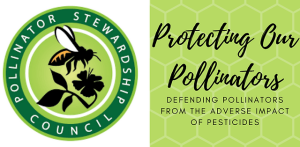Alan Harman
European researchers say they have found a previously unknown and harmful effect of neonicotinoids on honey bees – neonicotinoids in low and field-relevant concentrations reduce the concentration of acetylcholine in the royal jelly/larval food secreted by nurse bees.
The researchers at the Mainz University Medical Center and Goethe University Frankfurt in Germany say this signaling molecule is relevant for the development of the honey bee larvae.
At higher doses, neonicotinoids also damage the so-called microchannels of the royal jelly gland in which acetylcholine is produced, the researchers say in a paper published in the journal PloS ONE.
“The undesirable effect of neonicotinoids now discovered is a further indication that these insecticides represent a clear hazard to bee populations and this is a factor that needs to be taken into account in the forthcoming reassessment of the environmental risks of this substance class,” says Prof. Ignatz Wessler of the Institute of Pathology at the University Medical Center of Johannes Gutenberg University Mainz.
Wessler worked with Prof. Bernd Grünewald of the Bee Research Institute at Goethe University Frankfurt to uncover the previously unknown damaging effect of neonicotinoids that impairs the development of honeybee larvae.
They are able to directly demonstrate that neonicotinoids reduce the acetylcholine content of the larval food produced by nurse bees. Acetylcholine is a signaling molecule produced in the microchannels of the royal jelly gland of nurse bees. Comparable to neonicotinoids, it stimulates the nicotinic acetylcholine receptors that are also present in this gland.
“In lab tests we artificially removed acetylcholine from the larval food and the result was that bee larvae fed with this died earlier than bee larvae that received food containing acetylcholine,” Wessler says.
To examine the effect of neonicotinoids on the acetylcholine content in the jelly in more detail, bee colonies were exposed to various concentrations of neonicotinoids in flight tunnels.
“This exposure led to a reduction in the acetylcholine content of the jelly,” Wessler says. “Thus we were able to demonstrate that the field-relevant dose of the neonicotinoid agent thiacloprid (200 μg/kg) significantly reduces acetylcholine content by 50 %.
“On exposure to higher doses, we were even able to verify that acetylcholine content can be reduced by 75%. Exposure of the bees with the higher doses results in serious damage to the microchannels and secretory cells of the jelly gland.
“Our research results thus confirm that the neonicotinoids can jeopardize the normal development of honeybee larvae.”
The European Un ion in 2013 imposed temporary restrictions on the use of three neonicotinoids – clothianidin, imidacloprid, and thiamethoxam – after it was reported in several scientific publications that high but not lethal doses of various neonicotinoids could be associated with the falls in the populations of wild bees, bumblebees, and queen bees.
Also reported were abnormalities in breeding activity and impaired flight orientation in the case of honeybees.
However, at the time there were critics of these reports who pointed out that, among other things, the researchers had used high, non-field-relevant doses of neonicotinoids and had carried out their experiments under artificial laboratory conditions.








